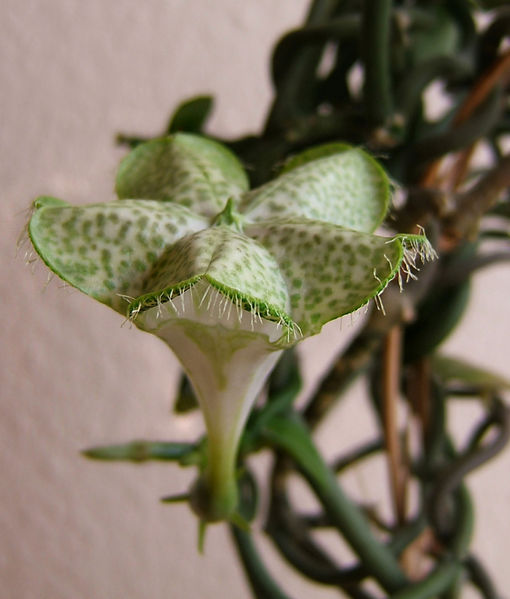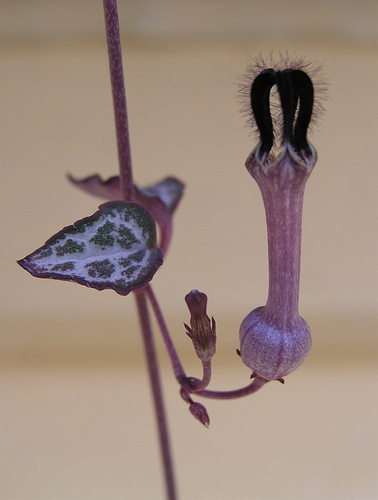Botanical Deceptions
15 May, 2020
I’ve been on a steady one-a-day listening spree of In Defense of Plants podcast episodes. Today I listened to Episode 216: Dying Bees, Wasp Venom, and other Strange Floral Scents, featuring an interview with Dr Annemarie Heiduk. If you enjoy geeking out about plants, insects, chemistry or ecology, I highly recommend taking a listen!
Here’s a brief summary of the part which blew my mind. There are loads more juicy details in the podcast so I’m confident that I’m not spoiling it for you by sharing this.
There’s a plant (Ceropegia sandersonii) that releases chemical compounds which mimic those released by honey bees when they are wounded (e.g. by spiders). This suite of compounds attracts Desmometopa flies which specialise in stealing food from spiders (they consume the body fluids of the injured bees). The fly comes to the flower expecting a meal, becomes trapped and covered in pollen, and is released a day later when the flower withers - allowing it to visit more flowers.
How’s that for a pollination syndrome?! Isn’t that just ridiculous! Gettin’ me all fired up on science over here!
More info can be found on the Wikipedia page for Ceropegia sandersonii and in this article: To Attract Pollinators, Flower Mimics Wounded Bee.
A friend of mine has a gorgeous vine growing as a potted plant at her house. Only while listening to this episode did I realise it’s a member of the Ceropegia! Now I’m stoked to identify it to species level and ask her ever-so-sweetly if I might take a cutting (or seeds). The one she has looks very much like this C. linearis sub. woodii:
